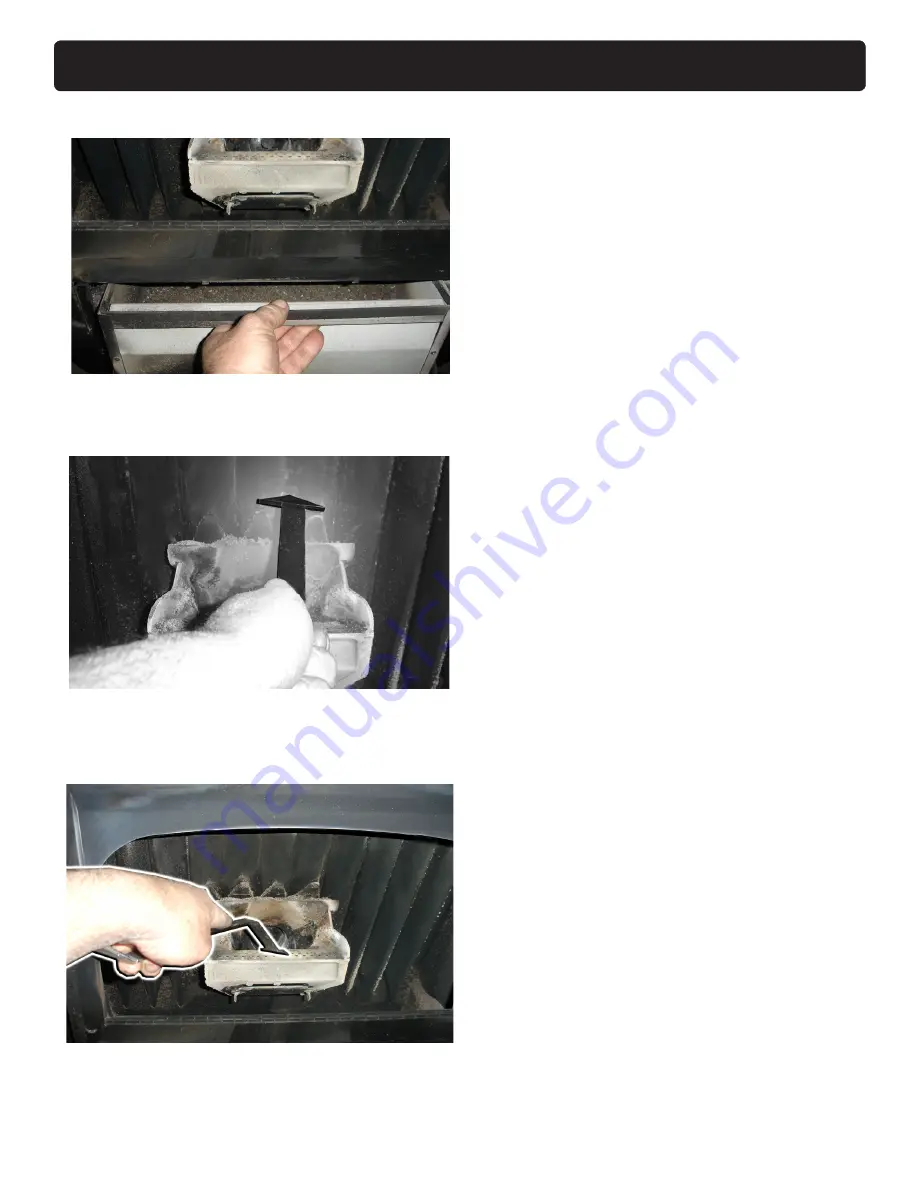
XXV Pellet Stove
removing ashes:
Fuel quality and moisture content will dictate how
often
it will be necessary to empty the ash pan.
disposal of ashes
ashes should be placed in a metal container with
a tight fitting lid. The closed container of ashes
should be placed on a noncombustible floor or
on the ground, well away from all combustible
materials, pending final disposal. If ashes are
disposed of by burial in soil or otherwise locally
dispersed, they should be retained in the closed
container until all cinders have thoroughly
cooled.
It is recommended that the stove is cold and shut
down for removing the ash pan.
1. Open the front door of the stove and then open
the ash door by pulling downward on the ash lip.
Remove the ash pan (be sure to wear protective
gloves if the stove is not cooled down). See Fig.
.
. Slide the ash pan back into the stove, seating it
against the rear of the firebox. Lift the ash lip to
close the ash door and then close the front door
of the stove.
cleaning:
The stove should be cleaned after burning ap-
proximately 1 ton of pellets (50 bags). The cleaner
the stove, the more efficient it will be. You will burn
less pellets and heat output will be greater.
note:
Higher ash content pellets will require more
frequent cleaning.
1. Shut down the stove and
disconnect power cord
to insure that all motors are stopped.
. Clean the heat exchanger with scraper as shown
in fig 34.
. Brush or scrape the inside of the stove to remove
fly ash.
4. Scrape the burn pot with the flat end of the scraper
provided with the stove. Inspect the holes on the
burn pot surface. See Fig. 5.
5. Open the burn pot clean-out. Clean fly ash from
the burn pot and replace the cover. See Figures
9 and 40 on page 4.
Maintenance
Fig. 33
Fig. 35
Fig. 34























